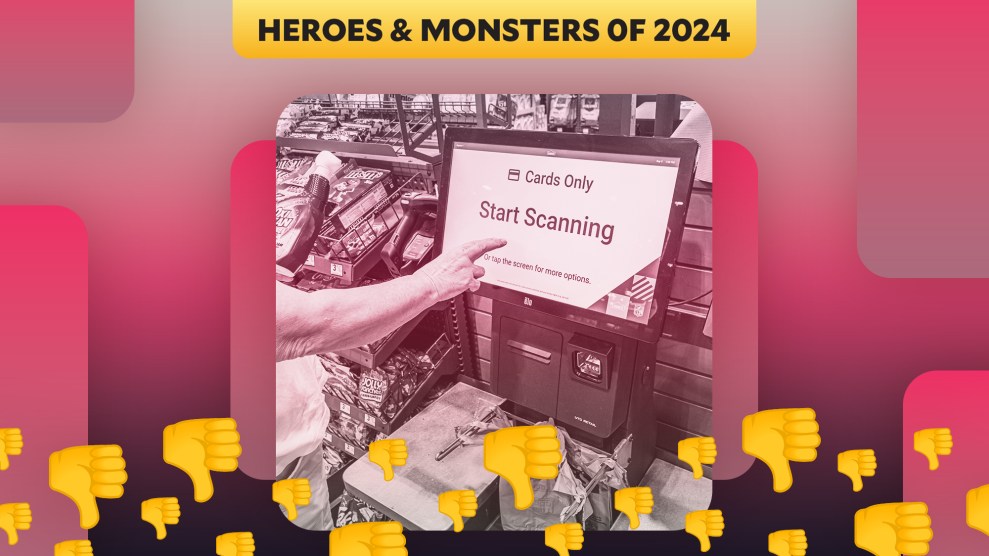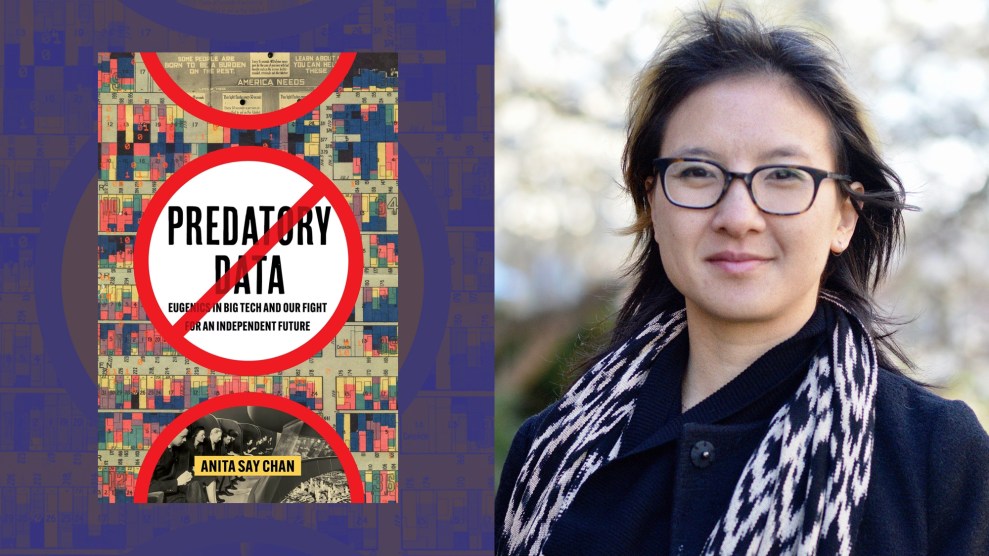Mother Jones: What will it take for renewables to go mainstream?
Amory Lovins: They already have in many places. The U.S. lags badly; only 4 percent of our power comes from micropower—cogeneration, wind, sun, small hydro, geothermal, biomass, and waste fuel. The reason the U.S. lags so badly is that we have obsolete rules that favor big over small, supply over efficiency, and incumbents over new market entrants. It’s the very opposite of a competitive market. So a good dose of conservative economic principles would get us even further than trying to give technologies we like subsidies as big as the ones we don’t like are already getting. Of course, desubsidizing the whole energy sector would be a wonderful advance. Remember, the subsidies that renewables get are an attempt to catch up with much larger and ever-increasing subsidies that fossil and nuclear already enjoy. And those are permanent, whereas the renewable ones tend to be temporary, doled out a year or two at a time. The U.S. wind industry has been crashed at least three times, quite deliberately, by Congress messing with the tax credits from year to year and in a stop-and-go fashion. You can’t run an industry that way and develop the capacity and the jobs. That’s why we import most of our wind turbines.
MJ: So if you were king, what would you do to make renewables take off?
AL: Level the playing field, but also let them in. There are many obstacles in most parts of the country to being allowed to hook up generators. Many utilities will pay you an unfairly low price or require high standby charges or require onerous and unnecessary engineering studies and fancy switchgear not required by the relevant standards, so these are simply barriers to competition. The barriers that renewables and efficiency face come less from our living in a capitalist market economy and more from not taking market economics seriously, not following our own principles.
MJ: What energy policies should the next president try to enact right away?
AL: I think the important policies need to happen at a state rather than a federal level. With modest exceptions, our federal energy policy is really a large trough arranged by the hogs for their convenience.
MJ: So how could Washington best cut fuel consumption?
AL: Let me give you one for electricity and one for oil, because they are each two-fifths of the CO2 problem. For electricity, we decouple utilities’ profits from sales so they will no longer be rewarded for selling more energy or penalized for selling less, and if they do something smart to cut our bill, we let them keep a small part, maybe a 10th of the savings, as extra profit—so we, and they, are both incentivized. This has been tried in a couple of states very successfully. For cars, the most effective thing would be a “feebate”: In the showroom, less-efficient models would have a corresponding fee, while the more-efficient ones would get a rebate paid for by the fees. That way when choosing what model you want you would pay attention to fuel savings over its whole life, not just the first year or two. It turns out that the automakers can actually make more money this way because they will want to get their cars from the fee zone into the rebate zone by putting in more technology. The technology has a higher profit margin than the rest of the vehicle.
MJ: What’s the most promising new energy source?
AL: The first 10 or so on my list are ways to wring far more work out of the energy that we already have much more cheaply than buying it. Typically, if we do that right in our buildings, vehicles, and factories, the capital cost will be comparable to today’s or even lower.
MJ: And in terms of supply?
AL: Micropower is now providing about one-third of the world’s new electric capacity. To give you an idea of how fast this revolution is going, in 2006 distributed renewables alone got $56 billion of private risk capital while nuclear as usual got zero—it’s only bought by central planners. Nuclear added less capacity than photovoltaics and a 10th of what wind power added. Even in China, which has ambitious nuclear goals, they already have seven times as much distributed renewable as nuclear capacity, and it’s growing seven times faster.
MJ: Then I suppose you consider nuclear the most overhyped energy source?
AL: Clearly. It’s unable to find private investment despite federal subsidies now approaching or even exceeding its total costs.
MJ: If you had $1 million to invest in the energy sector, where would you put it?
AL: Efficient use. I want to do the cheapest things first to get the most climate protection and other benefits per dollar. Buying micropower and “negawatts” [Lovins’ term for efficiency measures] instead of nuclear gives you about 2 to 11 times more carbon reduction per dollar, and you get it much faster.
MJ: Would you rather live next to a nuclear plant or a coal-burning plant?
AL: Neither. They are both uneconomic and unnecessary. This is like a stupid multiple-choice-test question: Would you prefer to die of climate change or oil wars or nuclear holocaust? The right answer is none of the above. Because all three of those problems—climate change, oil dependence, and the spread of nuclear weapons—go away if we just use energy in a way that saves money, and since that transition is not costly but profitable, it can actually be led by business, and in its coevolution with civil society is the most dynamic force we have.
MJ: I know you’re big on energy savings in your own house. What is your personal favorite?
AL: The R19 window I just installed. It looks like two sheets of glass, costs less than three, but insulates like 19. By using expensive windows, I was able to save even more capital up front by eliminating the heating system.
MJ: Do you have any energy-use guilty pleasures?
AL: I take long showers, but they are 99 percent solar, so I guess it’s not really guilty.















